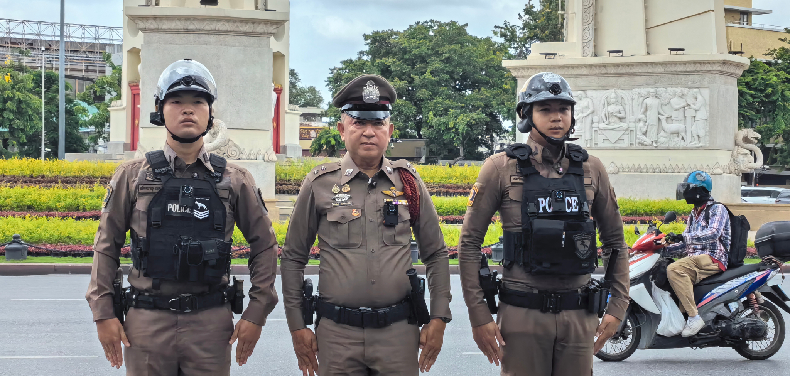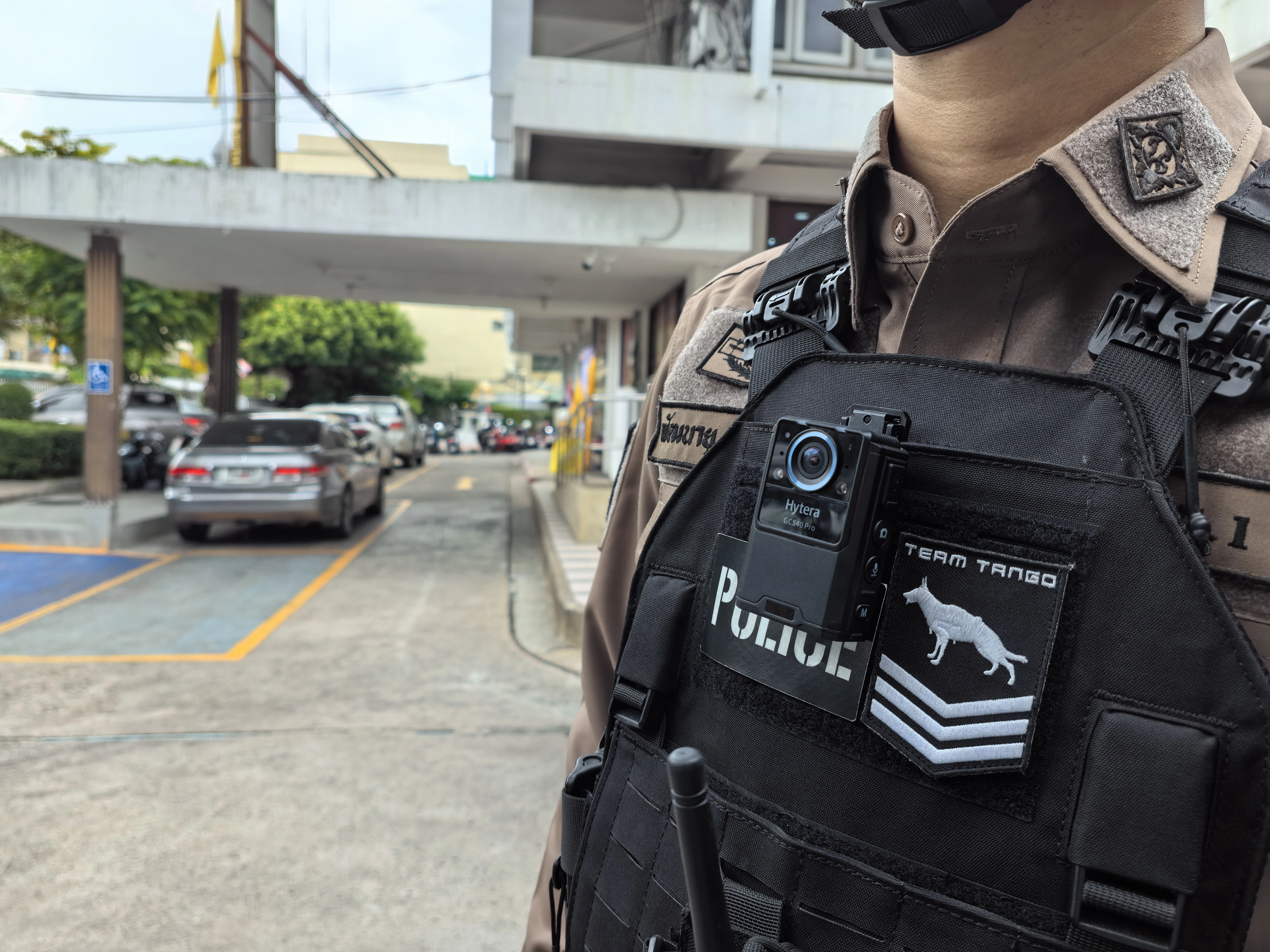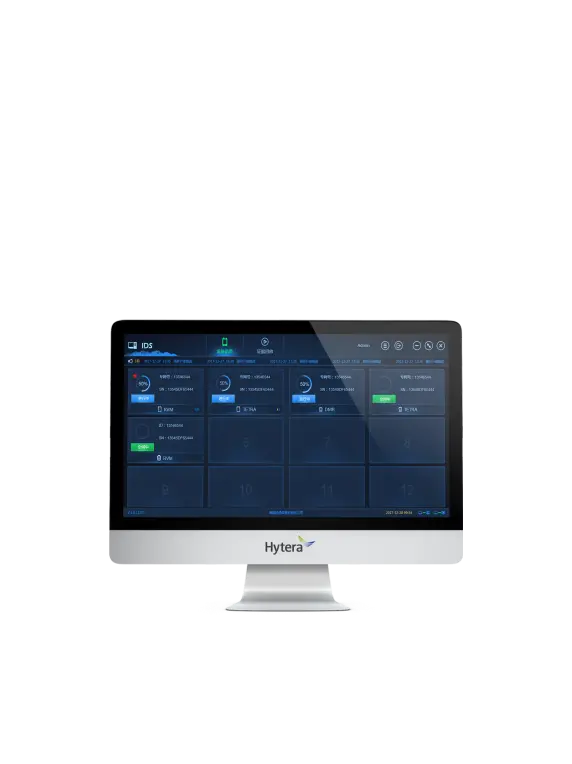
The Royal Thai Police wanted to invest in new body-worn cameras to enhance police accountability and transparency, increase public trust, and ensure compliance with the 2022 Prevention and Suppression of Torture and Forced Disappearance Act. The cameras needed to be light, easy to use and the video and audio recordings had to be secure and tamper-proof. Hytera supplied its GC540 Pro body-worn cameras and EDS30 portable desktop docking stations, which are simple and easy to operate and fully encrypted to prevent tampering or wiping.
-

User
Royal Thai Police
-

Project Time
2024 -

Market Segment
Public Safety
-

Product
GC540 Pro Body Camera
EDS30 Portable Desktop Docking Station
Challenge
The key goals of deploying BWCs are to increase police accountability, enhance the transparency of police processes and operations, provide proof of compliance with the Prevention and Suppression of Torture and Forced Disappearance Act, and to be easy to use.
In the past, the recording devices used by the police were complicated to operate, lacked adequate protection for the chain of evidence, had a short battery life, and were bulky and difficult to handle. This posed significant challenges for the police in terms of adopting body-worn cameras.
Royal Thai Police launched an initiative to purchase new BWCs, which will be used in crime suppression, road traffic and investigatory works. For this latest procurement of body-worn cameras, RTP significantly upgraded the technical requirements.
The devices must not only be lightweight, compact, highly integrated and user-friendly, but also feature a wide field of view and long battery life. Additionally, they must ensure evidence protection by being tamper-proof and resistant to malicious deletion. Evidence collection and management must be conducted exclusively through dedicated software, ensuring the security and integrity of the chain of evidence.
In the past, the recording devices used by the police were complicated to operate, lacked adequate protection for the chain of evidence, had a short battery life, and were bulky and difficult to handle. This posed significant challenges for the police in terms of adopting body-worn cameras.
Royal Thai Police launched an initiative to purchase new BWCs, which will be used in crime suppression, road traffic and investigatory works. For this latest procurement of body-worn cameras, RTP significantly upgraded the technical requirements.
The devices must not only be lightweight, compact, highly integrated and user-friendly, but also feature a wide field of view and long battery life. Additionally, they must ensure evidence protection by being tamper-proof and resistant to malicious deletion. Evidence collection and management must be conducted exclusively through dedicated software, ensuring the security and integrity of the chain of evidence.

Solutions
Hytera provided RTP with highly integrated Hytera GC540 Pro body-worn cameras and collection stations. Each BWC weighs less than 120g, while supporting over 10 hours of continuous 1080p full HD video recording. The cameras provide a field of view exceeding 152 degrees, offering a wider evidence recording angle and are simple to operate.
In addition, the GC540 Pro is equipped with a built-in battery, which prevents the forced shut down of the BWC by the users; a stabilization feature has been added, so that the image captured is clearer.
The BWCs are paired with Hytera’s EDS30 portable desktop docking station, which weighs less than 10kg. The EDS30 supports simultaneous data collection and charging for up to eight BWCs. The docking station is fully compatible with Hytera’s IDS (integrated docking software). It is simple and easy to use, and, more importantly, it’s designed to ensure comprehensive protection against evidence tampering or deletion.
In addition, the GC540 Pro is equipped with a built-in battery, which prevents the forced shut down of the BWC by the users; a stabilization feature has been added, so that the image captured is clearer.
The BWCs are paired with Hytera’s EDS30 portable desktop docking station, which weighs less than 10kg. The EDS30 supports simultaneous data collection and charging for up to eight BWCs. The docking station is fully compatible with Hytera’s IDS (integrated docking software). It is simple and easy to use, and, more importantly, it’s designed to ensure comprehensive protection against evidence tampering or deletion.

Royal Thai Police
The Royal Thai Police (RTP) (Thai: สำนักงานตำรวจแห่งชาติ; RTGS: samnakngan tamruat haeng chat) is the national police force of Thailand. The RTP employs between 210,700 and 230,000 officers, roughly 17 percent of all civil servants (excluding the military and the employees of state-owned enterprises).
Benefits
Increased Accountability
By recording all interactions between the police and the public, BWCs can provide a truer picture of what happened to help refute, moderate or confirm the verbal testimony of both police officers and members of the public involved in an incident or witnesses to it. BWCs can act as a deterrent to excessive force by police, as officers are aware that they are being recorded. Conversely, BWCs can also encourage members of the public to moderate their behaviour during encounters with police.
Enhanced Transparency
BWCs help to build and improve community relations between police and the public by offering greater transparency. If the public knows there are video and audio recordings of interactions between police and citizens, and that BWCs are helping to moderate police behaviour, this can increase public trust in the police. Research has shown that officers who wear BWCs have fewer complaints against them than those who do not.
Compliance with the Act
BWCs provide proof of police compliance with the Prevention and Suppression of Torture and Forced Disappearance Act, as all police actions are, or should be, recorded. This helps to restrain police from acting illegally. The Hytera IDS ensures the camera footage is immediately uploaded to the local or central digital evidence management system when the device is docked, while the AES256 encryption technology ensures it cannot be tampered with. In addition, Hytera has modified the GC540 Pro to ensure the battery cannot be removed by officers in an attempt to avoid recording their activities.
Improved Evidence Gathering
BWCs can help officers document evidence, including the ability to record statements, make observations and document behaviors at the scene of an incident or elsewhere in the field, rather than having to bring people back to the police station for interviews. The video and audio recordings can also help officers remember key events and provide direct evidence to support prosecutors, which can lead to earlier guilty pleas.
Ease of Use
The GC540 Pro is the smallest and lightest Hytera body-worn camera. It is smaller than a standard business card and weighs less than 120 grams. It is easy to hold in the palm or clip onto the outfit of officers who are always on the move, so it adds very little extra to the officer’s gear load. The quick and simple sliding switch makes recording activation very easy.
By recording all interactions between the police and the public, BWCs can provide a truer picture of what happened to help refute, moderate or confirm the verbal testimony of both police officers and members of the public involved in an incident or witnesses to it. BWCs can act as a deterrent to excessive force by police, as officers are aware that they are being recorded. Conversely, BWCs can also encourage members of the public to moderate their behaviour during encounters with police.
Enhanced Transparency
BWCs help to build and improve community relations between police and the public by offering greater transparency. If the public knows there are video and audio recordings of interactions between police and citizens, and that BWCs are helping to moderate police behaviour, this can increase public trust in the police. Research has shown that officers who wear BWCs have fewer complaints against them than those who do not.
Compliance with the Act
BWCs provide proof of police compliance with the Prevention and Suppression of Torture and Forced Disappearance Act, as all police actions are, or should be, recorded. This helps to restrain police from acting illegally. The Hytera IDS ensures the camera footage is immediately uploaded to the local or central digital evidence management system when the device is docked, while the AES256 encryption technology ensures it cannot be tampered with. In addition, Hytera has modified the GC540 Pro to ensure the battery cannot be removed by officers in an attempt to avoid recording their activities.
Improved Evidence Gathering
BWCs can help officers document evidence, including the ability to record statements, make observations and document behaviors at the scene of an incident or elsewhere in the field, rather than having to bring people back to the police station for interviews. The video and audio recordings can also help officers remember key events and provide direct evidence to support prosecutors, which can lead to earlier guilty pleas.
Ease of Use
The GC540 Pro is the smallest and lightest Hytera body-worn camera. It is smaller than a standard business card and weighs less than 120 grams. It is easy to hold in the palm or clip onto the outfit of officers who are always on the move, so it adds very little extra to the officer’s gear load. The quick and simple sliding switch makes recording activation very easy.
Ready to talk? Get in touch with us.




